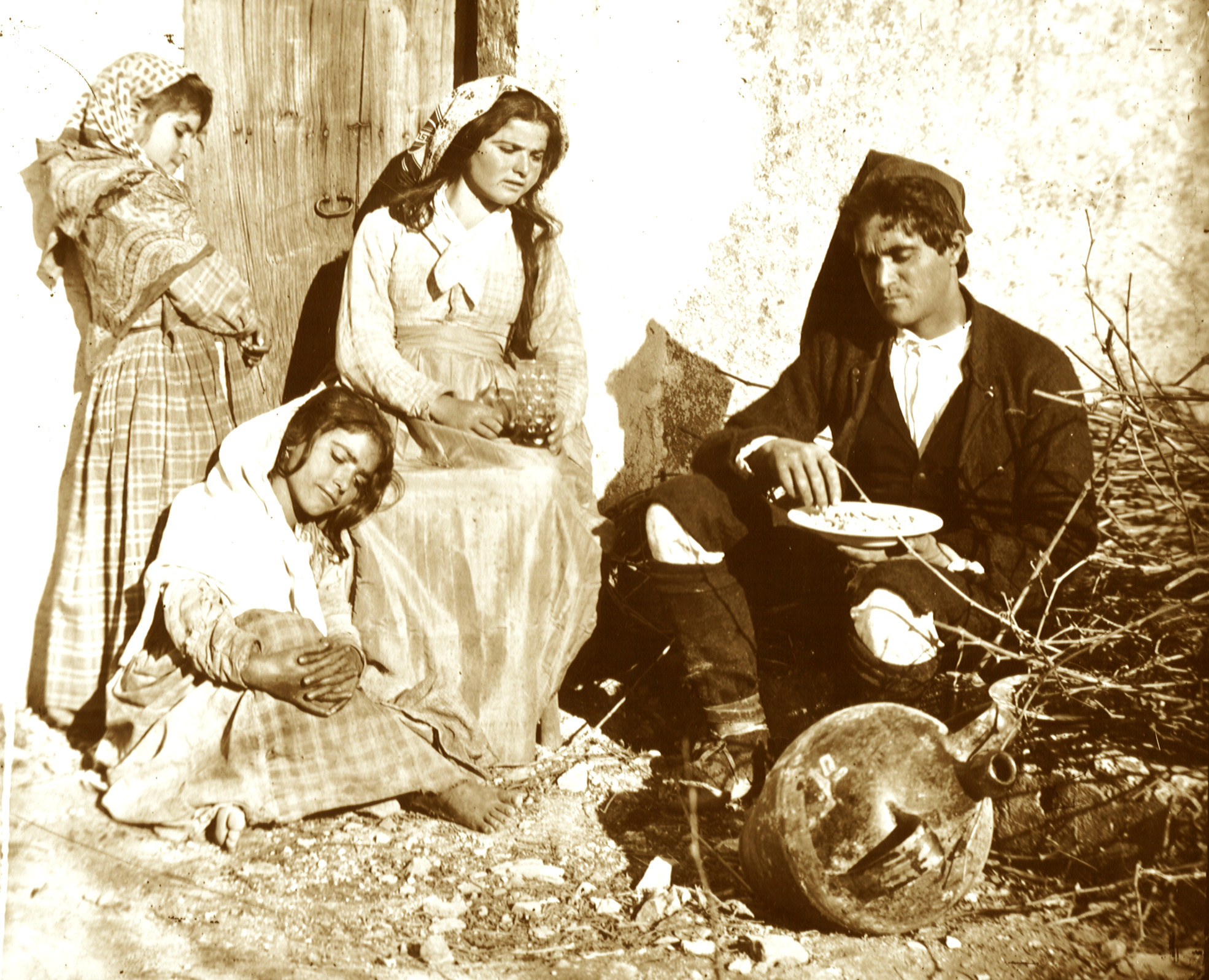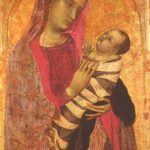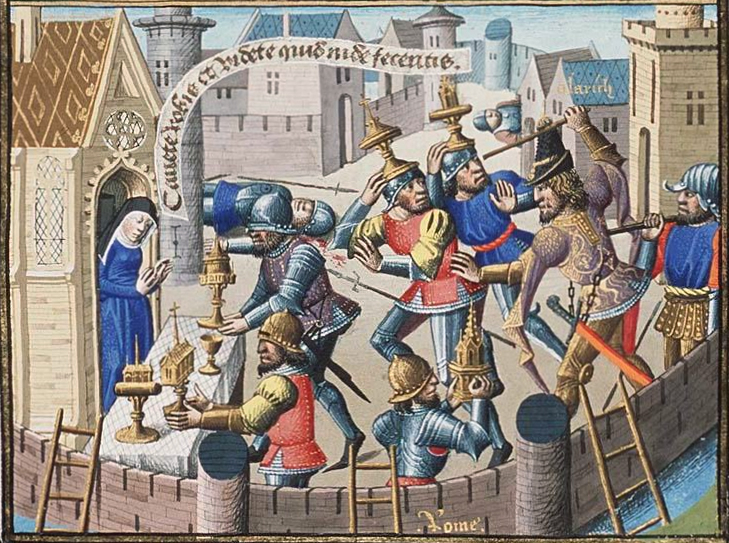
The Fifty-Three Known Forefathers of the Italian People: Latest Discoveries
This is a story about Italian y-DNA. But putting it that way is misleading. For there is not a single coherent story of “Italianness” that stretches back in time. And that story is almost inseparable from the stories of the surrounding populations with which developments in Italy are intimately connected. But it is the case that the science of genetics is gradually unfolding a richer picture of the past than was known before. If we go back far enough (thousands of years) we find (along the patrilineal line) that virtually all Italians are descended from only fifty-three men. Why there are so few, we will see below.
Casual labels are inadequate to tell this story. Italy as we know it now did not exist thousands of years ago. DNA is far older than the countries of today. The story of these fifty-three forefathers (at least those so far identified by geneticists) is the story of the many human migrations that have been part of the Italian story. It is a subset of a worldwide pattern of migration of which movements through Italy were only a part.
Y-DNA (inherited solely from father to son in the y-chromosome) is used by scientists to study male ancestry going back to the most recent common patrilineal ancestor of all human beings. That man, known as “Y-chromosome Adam”, lived around 250,000 years ago in Africa. Similarly, mitochondrial DNA also found in human cells is passed from mother to daughter (and son) and can be used to trace human matrilineal ancestry back to “Mitochondrial Eve”, who also lived hundreds of thousands of years ago in Africa. Every human being on the planet has these two individuals (who may never have met and may not have lived either in the same place or at the same time) as patrilineal and matrilineal ancestor, respectively. But because we have many many more ancestors than just our patrilineal and matrilineal ancestors the most recent common ancestor of all human beings actually lived much much more recently. A third kind of DNA “autosomal DNA” (found on all the chromosomes except the sex chromosome) is also used to find relatives and estimate ethnicity (although the latter process is controversial). Although this story focuses on y-DNA, future articles will explore the stories told by mitochondrial DNA (i.e. maternal ancestry) and autosomal DNA.
The study of human DNA in Italy, because of Italy’s cross-roads position in the Mediterranean, has been of keen interest to genetic scientists ever since the tools became available and an increasing number of papers have been published. In 2018 Viola Grugni and her colleagues published the latest (and most extensive) study of Italian y-DNA. They collected y-DNA from 817 Italian men spread across Italy from Bergamo to Sicily. From this dataset they were able to identify fifty-three “forefathers” from whom Italians are descended. These 53, it might be noted, are not only the ancestors of Italians. They also often appear as the ancestors of Europeans and people living around the Mediterranean basin, the Middle East even further afield.
The names scientists give these individuals are an alphabet soup of identifiers and each of them is associated with a particular man who lived sometime in the past and a “haplogroup” – all those whose patrilineal line passes back through that individual. The “fifty-three” are themselves descended from ancestors deeper in time who fall into six major haplogroups: R1b representing 45% of Italian y-DNA and the R group from which originated in northern Asia, J representing 19% originating in the Middle East and Iran, E representing 15% originating in Africa, G representing 4% also originating in the Middle East and Iran, I representing 5% and originating in Europe itself and R1a representing another 5%. All of them, as stated above, are ultimately descendants of y-DNA Adam, who lived in Africa. The proportions vary from region to region as illustrated in the diagram below.

R1b-U152 People from the north and west
Each of these broad haplogroups tells a story. R1b, the highest proportion across Italy and one of the 53 forefathers we can now identify is “R1b-U152”. He is believed to have originated in northern or western Europe and is the patrilineal ancestor of over 22% of Italians. The highest representation of R1b-U152 occurs in Bergamo plains (53%) and Bergamo Valleys (46%) and Tortona (35%).
E-V13 Bronze Age Balkans
The ancestor who appears next most frequently is “E-V13”. E-V13 is the patrilineal ancestor of 8.3% of Italians and lived about 4800 years ago. The E-V13 haplogroup is a branch of the E haplogroup that is widespread in low percentages across Europe. However, it reaches its highest concentrations in the Balkans. The presence of E-V13 in Italy may be associated with direct migration from the Balkans across the Adriatic or into northern Italy (for example the Iapygians of south-eastern Italy who spoke a non-Italic language); or indirect migration via Greece during classical and later times. E-V13 is most strongly represented in Sicily (at 14.1%), Apulia (13.7%), Grecian Salento (12.2%) areas of Greek or Balkan settlement. E-V13 is known to have begun its expansion through Europe during the Bronze Age. Further back in time the ancestors of E-V13 (pastoral nomads from Africa) crossed into the Mediterranean during the last greening of the Sahara about 12000 years ago.
R1b-S116 Origins in Iberia
The next of our fifty-three forefathers is R1b-S116 who is the patrilineal ancestor of 8% of Italians. R1b-S116 is found most frequently in Spain. R1b-S116 lived about 3500 years ago. The highest representation of 17% occurs in Bergamo with the next highest at 13% in the Borbera Valley.
R1a-M17 Mainland Greek Antecedents
R1a-M17, who is the patrilineal ancestor of 4.3% of Italians, lived about 5000 years ago. This haplogroup is strongly represented in mainland Greece and Thrace. It occurs most frequently in the Grugni study in Greek Salento at 14.6%. Given these factors, it is a likely marker for Greek heritage.
R1b-U106 Lombard and Gothic arrivals
R1b-U106, who comes in at 3.8% is a forefather of proto-Germanic speakers. He lived 4700 years ago, and his branch expanded from northern Europe around 1700-500 BCE. Some of his descendants will have arrived in Italy during the Gothic and Lombard periods.
R1b-L23 – Deep Indo-European roots
R1b-L23 dates to 6100 years before the present and represents 3.5% of Italian paternal ancestry. The branch is most strongly represented in Anatolia and may be associated with the ancient Hittites, the civilisation which has left the earliest written record of an Indo-European languages.
J2a-M530 – Minoan Greek ancestry
The J2a haplogroup is most strongly found in Anatolia and the Caucasus and J2a-M530 may have come from this part of the world. Across Italy 3.5% of Italians have him as a patrilineal ancestor. In the results of the Grugni study, the highest proportion of J2a-M530 in Italy was found in Greek Salento and in the Tyrrhenian Calabria, both areas of strong ancient Greek settlement. J2a-M530 ancestry has been found in Iran, Crete and Cyprus, and possibly is associated with the peoples of the eastern Mediterranean before the arrival of the Indo-Europeans.
J2b-M241 – Balkans Again
Like E-V13, J2b-M241 is strongly represented in the Balkans and is likely a further example of Balkan and Greek migration into Italy. It occurs at the rate of 3.4% across Italy and is most strongly represented in Tortona (8.3%) and 5.9% in Apulia.
G2a-L497 – Northern and Central Europe again
G2a-L97 comes in at 3.2% and is part of the G haplogroup that is associated with north and central Europe.

Other E Branches – North Africa and the Mediterranean
Other descendants of the human ancestor “E” who lived in Africa are also part of the Italian scene. E1b-M81, E1b-V22 and E1b-M35* are found most frequently today in northern Africa and are represented in Calabria and Sicily. E1b-M81 is the patrilineal ancestor of 6.3% of Italians in Sicily. Some of the descendants of E1b-M81 may have arrived in Italy during the time of the Islamic Emirate of Sicily.
T – Middle East and North and East Africa
T appears in small proportions and originated about 25000 years ago in the Middle East or North or East Africa.
Why only Fifty-Three?
The above doesn’t go through all fifty-three “forefathers”, but draws out some of the stories can be learnt from studies of y-DNA. The full Grugni paper is linked below. It is important to note that the description above refers to known major human migrations, but the mutation of DNA (which is what allows scientists to identify a particular individual) are not correlated with such migrations. It is quite possible that the timing of arrival of a particular male in Italy was completed unconnected with a major migration. For example people of Germanic ethnicity were arriving in Italy throughout the period of the Roman Empire as slaves or soldiers and were still arriving in Italy as recently as the 1850s, when northern Italy was part of the Austro-Hungarian Empire. The stories above are therefore a gross simplification of a much more complicated story which has included much more. For example, French invasions, Spanish colonisation of southern Italy, two hundred years of north African and Arabic rule over Sicily, thousands of years of Jewish presence in Italy, the long Byzantine connection with Italy and Albanian arrivals (forming the Arbereshe minority). Moreover the science is still in its early days and the Grugni results will undoubtedly be updated as new studies are done. What we have are partial provisional sketches that are beginning to give us more information.Furthermore it could well be that the migrations of someone’s ancestors are far more complicated than such simple stories suggest. People have always moved around and the movements of most individuals simply aren’t recorded by history or genetics.
But why only fifty-three? Given the exponential nature of ancestry, shouldn’t there be many more? Scientists who study ancient DNA suggest an answer: violence. The remains that the Neolithic has left behind don’t have the kind of extremes of wealth and poverty that are so much a feature of modern day life. Those extremes began about the same time as metal was being first fashioned into weapons. As the Bronze Age began, a small number of (generally) male figures were able to amass enormous wealth relative to those around them. We know this through the discovery of their Bronze Age tombs in which a male is buried under a mound with weapons and a treasure trove of gold and other artefacts.DNA studies confirm that the process was associated with the differential disappearance of males from pre-existing populations. In other words men were killed and women were enslaved. The burials and the DNA point to the emergence of “lords” dominating a population. That pattern becomes what has for a long time been called “history”. An example of this kind of practice is in the burial mound found in the ancient Italian city of Paestum, south of Naples. Paestum was founded around 500BC by invading Greeks, who for a time drove out or enslaved the surrounding population. One of its surviving monuments is the “heroon”, the resting place of the mythical hero who founded the city. He was placed in a tomb buried under a mound, similar to the Bronze Age burial mounds.
A Diverse and Connected Fabric
So what about the “fifty-three”? If we think through the implications it becomes obvious that most will be the ancestors of most Italians (as well as for that matter being ancestors of many many people who come from places far beyond the boundaries of Italy). This is because, the further we go back in time the more ancestors we have. The haplogroup pie-charts illustrated above show clearly that male ancestry in any given country is a complex interweaving of human heritage. Haplogroup percentages from studies like Grugni’s, give a reasonable idea of how many of a particular person’s male ancestors might belong to a given branch of the y-dna tree, depending on where our parents and grandparents were born. Given that the stories of these haplogroups stretch out into the surround world, it’s much more than a story about Italy.The above has only looked at male ancestry. Female ancestry has its own fascinating stories to tell. Autosomal DNA, which is also used in such studies, will lead us in different directions.Of course we inherit much more than DNA from the people who have lived before us. share much more with the people who live around us, than ancestors who lived in the distant past. Human beings are much more than the sum of their genes. What genetics tells us most powerfully, is that we are all connected.
Images
Heroon, tomb of mythical founder of the city of Paestum, Campania, Italy (own work)Italian Y-DNA haplogroups by region (own work based on Grugni et al. data)European Region Y-DNA haplogroups QLao [CC BY-SA 4.0 (https://creativecommons.org/licenses/by-sa/4.0)], via Wikimedia Commons
Sources
Reconstructing the genetic history of Italians: new insights from a male (Y-chromosome) perspective, by
Viola Grugni, Alessandro Raveane, Francesca Mattioli, Vincenza Battaglia, Cinzia Sala, Daniela Toniolo, Luca Ferretti, Rita Gardella, Alessandro Achilli, Anna Olivieri, Antonio Torroni, Giuseppe Passarino & Ornella SeminoWho We Are and How We Got Here, Ancient DNA and the new science of the human past by David ReichEupedia – although this site has useful information, read with caution. The inferences it draws may not always be supported by the science.







